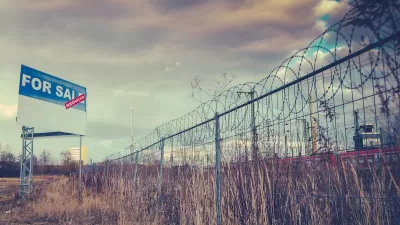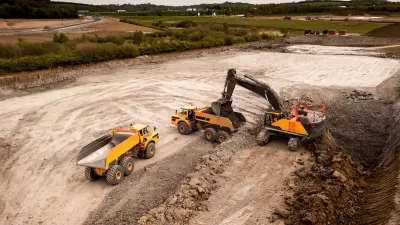"Phytoremediation" is a growing field (pun intended) of practice that uses particular types of plants to leech toxic materials out of the soil in contaminated sites.
The Dirt, the blog of the American Society of Landscape Architects, reports on how urban brownfields in New York City are being cleaned up using phytoremediation. ASLA quotes urban designer Kaja Kuhl, Adjunct Associate Professor at Columbia University, who found that more than 11 percent of New York City is abandoned lots:
"If glued together, these disparate, small-scale lots would be the size of Manhattan. Also, most of the sites are small: 50 percent of all vacant lots of less than 2,500 square feet and 80 percent are less than 5,000 square feet. If applied across these small sites, low-cost and highly-effective phytoremediation techniques could have a powerful impact and help ensure future urban development is really just redevelopment."
Here's a video from ASLA that illustrates how phytoremediation works:
From Industrial Wasteland to Community Park from ASLA on Vimeo.
FULL STORY: Using Plants to Clean up Toxic Sites

Manufactured Crisis: Losing the Nation’s Largest Source of Unsubsidized Affordable Housing
Manufactured housing communities have long been an affordable housing option for millions of people living in the U.S., but that affordability is disappearing rapidly. How did we get here?

Americans May Be Stuck — But Why?
Americans are moving a lot less than they once did, and that is a problem. While Yoni Applebaum, in his highly-publicized article Stuck, gets the reasons badly wrong, it's still important to ask: why are we moving so much less than before?

Research Shows More Roads = More Driving
A national study shows, once again, that increasing road supply induces additional vehicle travel, particularly over the long run.

Judge Halts Enforcement of Anti-Homeless Laws in Grants Pass
The Oregon city will be barred from enforcing two ordinances that prosecute unhoused residents until it increases capacity and accessibility at designated camping sites.

Advancing Sustainability in Los Angeles County Schools
The Los Angeles County Office of Education’s Green Schools Symposium brings together educators, students, and experts to advance sustainability in schools through innovative design, climate resilience strategies, and collaborative learning.

Using Old Oil and Gas Wells for Green Energy Storage
Penn State researchers have found that repurposing abandoned oil and gas wells for geothermal-assisted compressed-air energy storage can boost efficiency, reduce environmental risks, and support clean energy and job transitions.
Urban Design for Planners 1: Software Tools
This six-course series explores essential urban design concepts using open source software and equips planners with the tools they need to participate fully in the urban design process.
Planning for Universal Design
Learn the tools for implementing Universal Design in planning regulations.
City of Moreno Valley
Institute for Housing and Urban Development Studies (IHS)
City of Grandview
Harvard GSD Executive Education
NYU Wagner Graduate School of Public Service
City of Cambridge, Maryland
Newport County Development Council: Connect Greater Newport




























